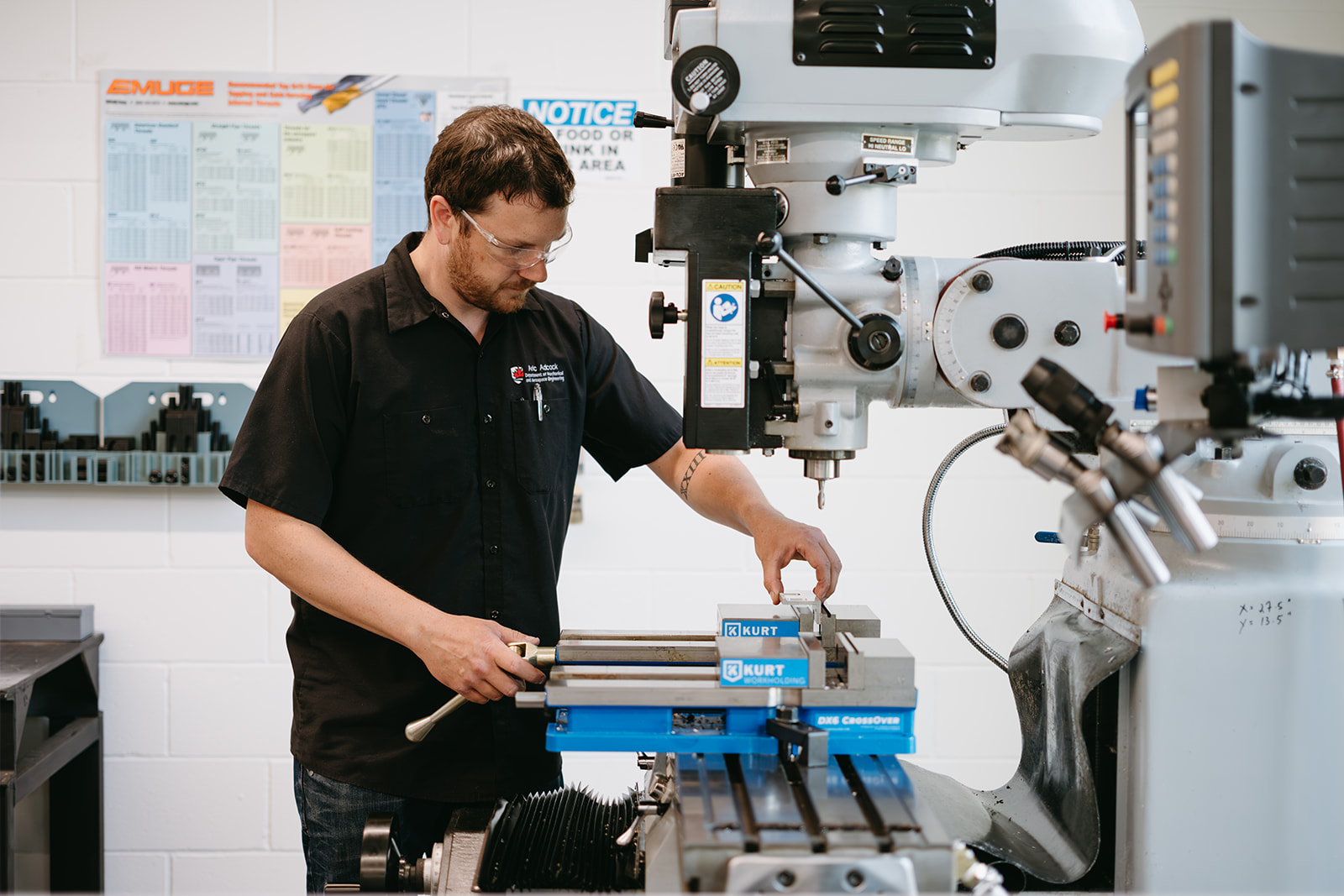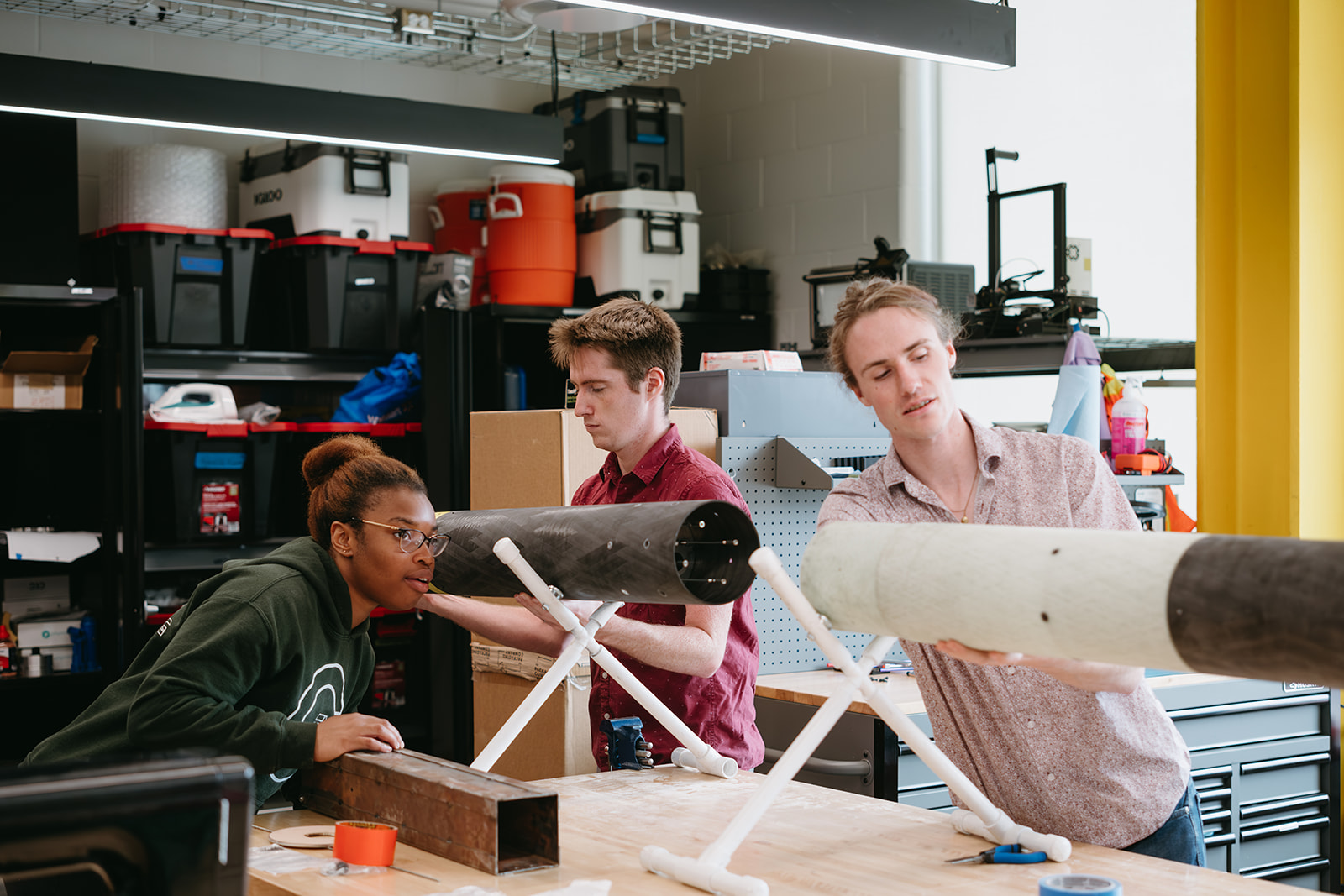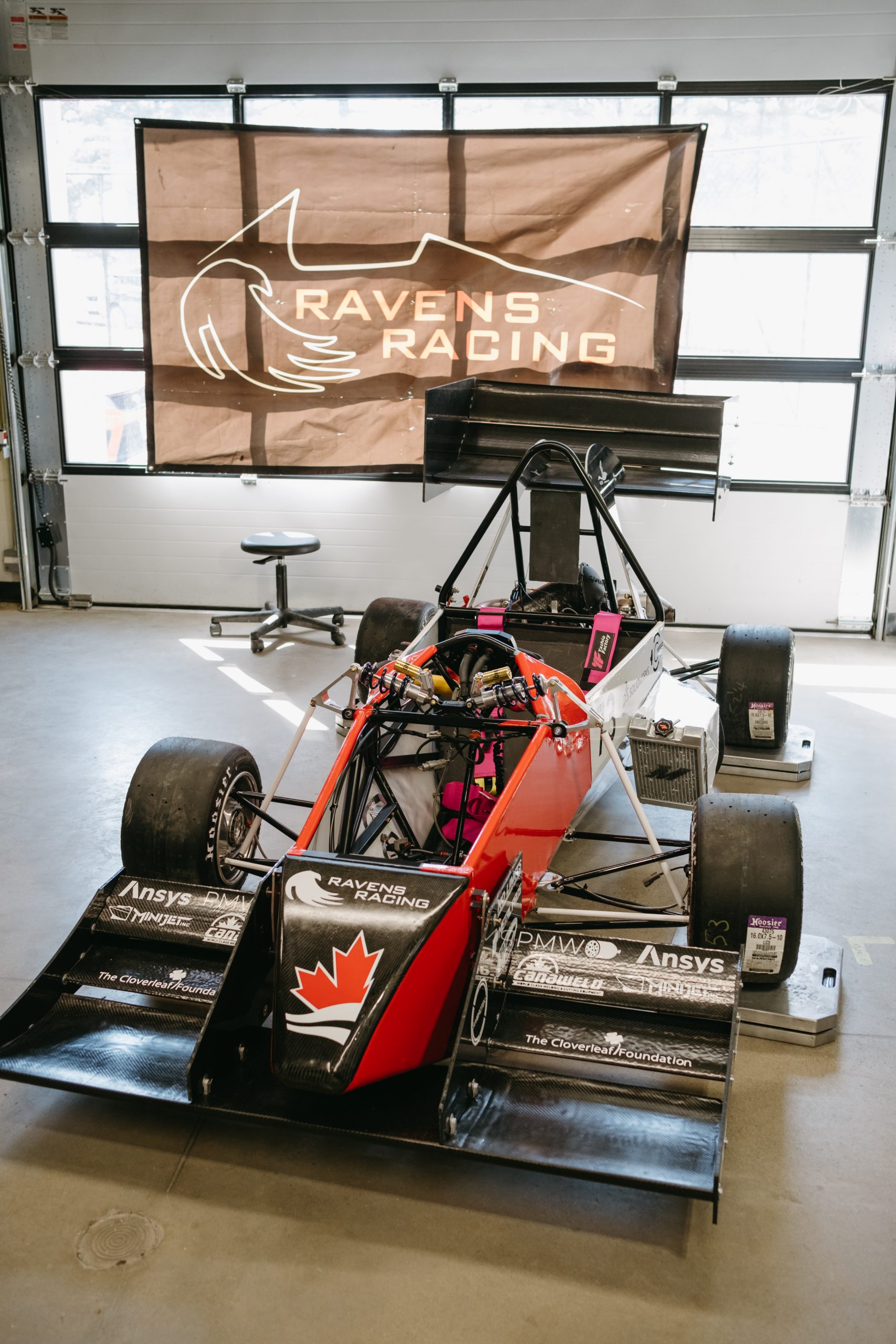The Evolution of the Engineering Design Centre
Joseph Mathieu
Melanie Mathieu
This time last year, Carleton University’s newest building came online with flurry of student activity.
The Engineering Design Centre (EDC) is more than just a three-storey, 25,000-square-foot facility. It is a physical representation of Carleton’s commitment to student innovation, where undergraduate Faculty of Engineering and Design (FED) students can advance their work and research in dedicated workspaces.
Located on the northwest side of the Mackenzie Building, the EDC features design rooms, workshop bays, maker spaces, and open study space. The vaulted ceilings of the Saravanamuttoo Family Atrium are framed by yellow I-beams, illuminating the building’s bones. The atrium’s outer walls are lined with busy workshop bays with glass garage doors that look in on a variety of capstone and club projects.
The Machine Shop in Action
Between several of these bays is the beating heart of EDC: the J.Y. and E.W. Wong Hub for Engineering and Design Innovation—the student machine shop.
“We made sure the shop had a lot more tooling that could cover a wide variety of work,” says Aric Adcock, the lab technologist who runs the shop. “The equipment is geared toward professional machinists but is very easy to use. Shop staff don’t need to be watching over students’ shoulders at all times.”

The shop features professional production equipment such as laser cutters and engravers, a 3D printer and a mill with conversational control, as well as various standard tools. “The staff were very experienced and passionate about their work, not only manufacturing critical hardware but also are very patient and continuously giving us advice,” says Yuhan Lu, a CU Inspace co-president. Because of the importance of the shop to many students, there were some challenging times when seemingly everyone needed to use the shop.
“That was a learning experience because we had a lot of new staff in this new building and obviously a lot of new students,” says Adcock. “This year looks like it’s going to go a lot smoother with a QR code on the door to book timeslots.”
For engineering student projects, getting their hardware just right makes all the difference—especially when the clubs take their projects on the road. At the 2023 Spaceport America Cup in New Mexico, the CU InSpace Team broke the sound barrier, hitting a top speed of Mach 1.43. It was the first vehicle from their team—and likely from Carleton—to break the sound barrier. Their big, yellow rocket, in the hue and style of a Loblaws No Name brand item, reached just under 25,000 ft during its successful flight and recovery. Carleton won the Spirit Award and placed fifth in their category.

Hands-on Learning across Disciplines
Once the clubs and capstone projects all got settled into EDC in fall 2022, they began talking to each other and coordinating for shop times, deliveries and equipment sharing.
“The Carleton Planetary Robotics Team lent us a few of their Milwaukee packouts for going down to Spaceport and Ravens Racing downstairs helped us out with vinyl cutting for sponsor decals,” says Lu. “Overall, I think it is a pretty well-fostered collaborative environment in the EDC and the bays, and we’re appreciative of a dedicated workspace for our projects.”
The Carleton Concrete Canoe team also appreciated having the expertise and equipment like the EDC truck for making and towing a 6-metre-long, 195-kg watercraft down to a competition in London, Ontario. “The EDC is absolutely essential for our design team,” says Macie Orrell, 2023-24 Concrete Canoe Captain. “The space allowed us to collaborate and host our weekly executive meetings, and we also used the outdoor yard space for concrete mixing, sanding and sealing the canoe.”

In the corner, ground-floor bay of EDC, Ravens Racing designs, builds, tests and races a car built to the rules of Formula SAE, put on by the Society of Automotive Engineers. The team regularly attends events in Michigan, Toronto and Pittsburgh. “We’ve always strived to build one of the lightest cars and we’ve been in the top five lightest cars at Michigan for the past six or seven years now,” says Michael Silveira, one of three Ravens Racing co-presidents this year. “This year, we actually broke around in-house record—our new car weighs 330 lbs.”
Before moving into their EDC workshop bay in August 2022, Ravens Racing were in the Ground Vehicles Laboratory in the Mackenzie Building. During the pandemic, they toiled through the elements in two shipping containers rented by staff in the P6 parking lot.
“It is a very large upgrade from the shipping containers,” says Silveira. “We’re very fortunate that we can have the corner bay completely to ourselves, where we get lots of attention and good working room with it.”
Silveira and his team are hoping to get a shipping container on the side of the EDC where they currently have their trailer parked, which houses binders of historical data that’s only available on paper. He also hopes that there will be more support staff in EDC from the electrical, civil and systems engineering labs.
The Future of the EDC
Despite these challenges, the long-term benefits of the EDC will be great for all the engineering departments. Under the leadership of Dean Larry Kostiuk, staff and faculty are working with students to help the new building grow into its highest potential.
“From design to occupancy last year, this building was four years in the making, and when it opened, we were quite anxious” says Kostiuk. “Seen from a year later, we are working hand-in-hand with our passionate students and talented technical staff to make the building inclusive for all.”
[button title=”To book space in the EDC, use the machine shop, or inquire about workshop bays, visit our website.” url=”https://carleton.ca/engineering-design/engineering-design-centre/” style=”red-solid” class=”center” /]